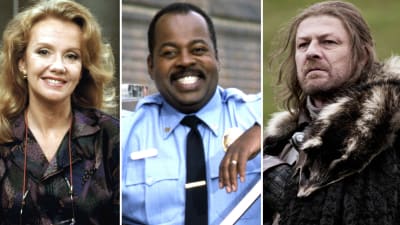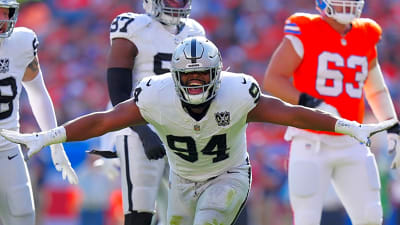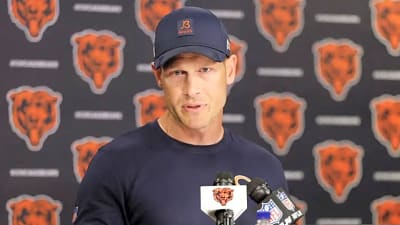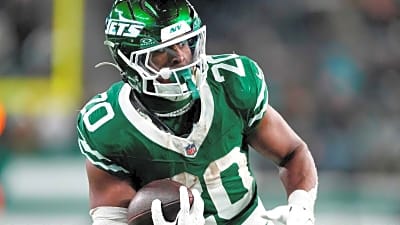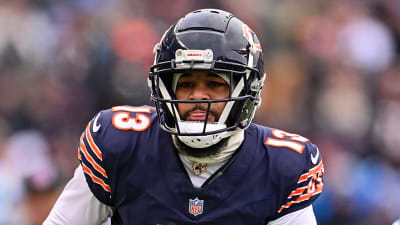
The New York Rangers have fallen apart at the NHL level, stooping to the draft lottery a season after winning the Presidents Trophy. At the same time, the team has gotten younger and has two first-round picks in the 2026 draft. To some extent, the Rangers have a healthy stable of future assets, as well as a roster that aims to return to the playoffs next season.
Still, the bright spot is that many of the young players in the Rangers system are showing some promise. The tides can ebb and flow, as each player will have their own individual ups and downs, but things are looking very positive in regards to the future. Let’s take a look at some of the tiers within the Rangers system to see how the future might shape up.
A tier
While there are prospects who belong in some tier above this, let’s call it S tier, the Rangers do not necessarily have an all-but-guaranteed franchise cornerstone that would constitute such a prospect. Still, these A tier prospects are quite likely to be regular NHL contributors. Each would carry significant but varying trade value, and would be expected to push for a full time role with any organization next season.
Top dogs
Scott Morrow is exactly such, having been acquired from the Carolina Hurricanes. With a strong season in the AHL, including an impressive stint in the NHL, Morrow is a near lock to play games for the Rangers this upcoming season. The fact that he kept his head above water in the NHL playoffs is impressive as well. A right shot with offensive skill, good skating, and decent size, Morrow is set to take a regular spot on the Rangers blueline next season.
Where coach Mike Sullivan chooses to deploy Morrow seems to be the more relevant question. Though right shots are rarer in general, the Rangers have Adam Fox, Will Borgen, and Braeden Schneider expected to hold down regular jobs on the right side as well. Morrow’s offensive upside might not be as high as Fox’s, so his defensive play will be crucial to him getting a spot. As a concept, having two offensive right shots might be a hurdle for the Rangers to navigate, so continued development for Morrow will be crucial here.
Often, more offensive defencemen take on the burden of playing on their weak side in such circumstances, which would be a barrier to entry for Morrow. A full-time role on the third pairing of a good team would be a nice step for Morrow this season, though there is a high likelihood that a top-four role is in his future.
Gabe Perreault, meanwhile, is often listed as the Rangers top prospect. While he did get into five games for the Rangers last season, he is substantially less proven than Morrow at this point. Still, Perreault is a fantastic prospect, a winger with high offensive upside. Perreault is a wizard with the puck and is able to make high level passes.
Perreault faces an issue that many similarly styled offensive wingers do. To be at his best, or even to get a look in the NHL, Perreault should be used in offensive situations, perhaps even in a top-six role. It is a tall task for a rookie to be tasked with consistent production, and a spot in the NHL to start the season is not guaranteed. The Rangers may opt for Perreault to build up to such a role, the most decisive and intentional among which is to start the season in the AHL.
Regardless, Perreault was at his best in college with a skilled power forward in Ryan Leonard. The best line for Perreault at any level should include a linemate who can dominate physical battles and find space at the net front. The best case scenario is that Perreault is instantly an upgrade to the Rangers top-six, but even a productive AHL season would be a nice development.
NHL impact
These players do not have the same value as Morrow and Perreault, but their impact on the Rangers this upcoming season might be greater. Both are very likely to see NHL games next season, as they did last year, but are positioned to earn full-time NHL roles heading into training camp.
Brennan Othmann has a lot of tools to work with. With a solid size and skating combination, Othmann still holds many of the upside traits that saw him drafted in the first round of the 2020 draft. While the production has not yet come at the NHL level, Othmann brings a lot of other dimensions to the ice.
Primary among these might be his ability as a forechecker. Though a skilled forward like Perreault is exciting, Othmann brings some useful elements lots with the decline and trading of Chris Kreider. Othmann brings enough substance to hold down a role on a more defensive line, as well as the potential to be a worker bee alongside more skilled linemates.
Brett Berard does not have the size or the draft pedigree, but has risen up such lists all the same. Berard brings many of the same traits as Othmann, playing with an intensity for the details. A tertiary offensive contributor exists, even if Berard is limited to a bottom-six role. Either way, Berard seems able to be a penalty killer, and could be a valuable member of the regular lineup this coming season.
B Tier
These prospects are a bit further from regular NHL action, and perhaps less likely to ever reach that level. They might still hold some trade value, though in all likelihood they will be most appreciated by Rangers fans rather than they are by those outside the zeitgeist.
Dylan Roobroeck is not often ranked so highly, but his 2024–25 season was very strong. A towering presence down the middle, Roobroeck is able to use his size to his advantage. Roobroeck is willing and able to find offence at the net front and has the tools to contribute at the NHL level.
Roobroeck has good hands, enough that he should be able to continue developing some net-front specific moves in tight. His shot is notable, as he was able to score from midrange as an AHL rookie. His skating is impressive enough to generate rush offence as well, where his hands and shot are once again assets. Clearly, playmaking is not his strongest suit, but he seems to have enough poise to continue developing here.
The fact that Roobroeck scored 20 goals as an AHL rookie is significant, but the fact that he did so as a regular centre is more significant. While there is no guarantee that Roobroeck will be able to play centre in the NHL, the defensive responsibilities that he is displaying are a fantastic sign. In all likelihood, he will be able to chip in by taking face-offs either way, but the hockey sense he is displaying is very encouraging.
Another season in the AHL is expected, but Roobroeck can put himself on the map for a potential in-season call up with a strong training camp. Even replicating his offensive output would be encouraging, but a step forward would position him really well to push for an NHL role in 2026–27.
EJ Emery is a right-shot defensive defenceman. His offensive production is even more muted than Fortescue’s, but his style is more physically imposing. If his skating and support passing can be refined over the years, Emery will have a path to the NHL regardless of his offensive totals. Instead, his progress should be monitored by his usage. The fact that Emery was able to hold down a major role as an NCAA freshman is extremely significant. The current logjam at right defence means that Emery will have the space to turn professional in his own time. Combined with strong skating abilities, Emery’s size should give him the physical prowess to handle top competition.
Drew Fortescue is a left-shot defenceman who plays a shutdown style. Former Ranger K’Andre Miller might be a good embodiment of what Fortescue might become defensively. Fortescue is a strong skater and will need to be mobile enough to handle opponents’ high end scorers. The offensive upside is limited, but Fortescue has enough quality to contribute to the overall team offence, and will likely be paired alongside defencemen with more puck skills. He seems capable of making sound breakout passes and has a good stick for breaking out plays.
Malcolm Spence was seen as a potential first-round pick by many accounts, yet he ended up going to the Rangers as a second-round pick in the 2025 draft. The upside is a middle-six winger who can add secondary offence, play in tough areas, and is trusted defensively. If he is able to carry over some offence to the NCAA level next season, he will start to push further up such lists. If he is able to assert himself as a top forward by the end of his sophomore season, he will be positioned to push for an NHL roster spot in 2027–28.
Dylan Garand has done well developing in the AHL, getting some playoff starts in each of his past two seasons. His raw stats seemed to finally turn a corner last season, as he reached at least 30 AHL games for the third straight season. If the Rangers run into any injury trouble in net next season, Garand has earned a chance to appear in an NHL game. Fans around the league desperate for a potential young backup goalie might even be wondering if Garand is available.
B- tier
The upside of these prospects is seen as more limited, with an NHL depth role representing an optimistic upside. There might be some trade value, though it would be limited. Fans outside the Rangers base are unlikely to know about these players, but they could still become relevant figures to the organization. The three prospects have a chance at springing up this list with some progress this upcoming season.
Noah Laba is a centre who put together a strong AHL season last year. He seems to have enough hockey sense to contribute on both sides of the puck. There is enough quality to his game, but it will be effort and responsibility that pave Laba’s path to the NHL. He will have to prove to be a reliable defender, perhaps even a stalwart penalty killer, in the AHL before getting a true look in the NHL.
Adam Sykora has spent the last two seasons in the AHL, this year playing in what represents his NHL upside. A potential middle-six winger, Sykora’s game will rely on intensity and details more than it does skill. There is a functionality to his offensive game, and he will likely have to increase his AHL point totals to get more serious NHL consideration.
Carey Terrence, recently acquired from the Anaheim Ducks, will graduate from the OHL this season. A speedy forward, Terrance will have some time to develop into a consistent AHL scorer. His totals in the OHL were not exactly impressive, as Terrence does not seem to have much upside as a playmaker. Perhaps his speed will allow his offensive game to translate well to higher levels, but he will need more dimension to his game to make the NHL. A role on the penalty kill will be imperative to any such aspirations.
More must-reads:
- Carter Hart, others found not guilty in Hockey Canada sexual assault trial
- Hurricanes take care of business, sign star winger to lucrative eight-year extension
- The 'Multiple 100-RBI MLB seasons' quiz
Breaking News
Trending News
Customize Your Newsletter
 +
+
Get the latest news and rumors, customized to your favorite sports and teams. Emailed daily. Always free!
